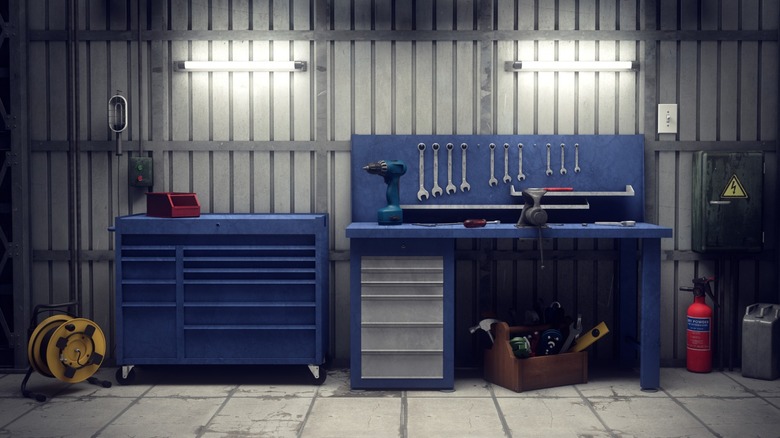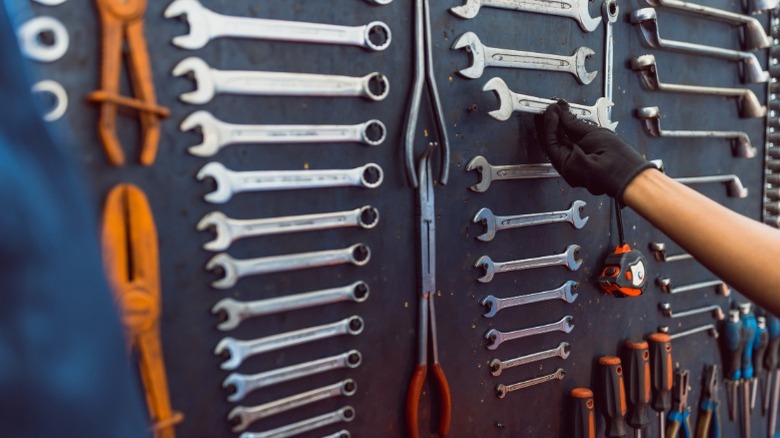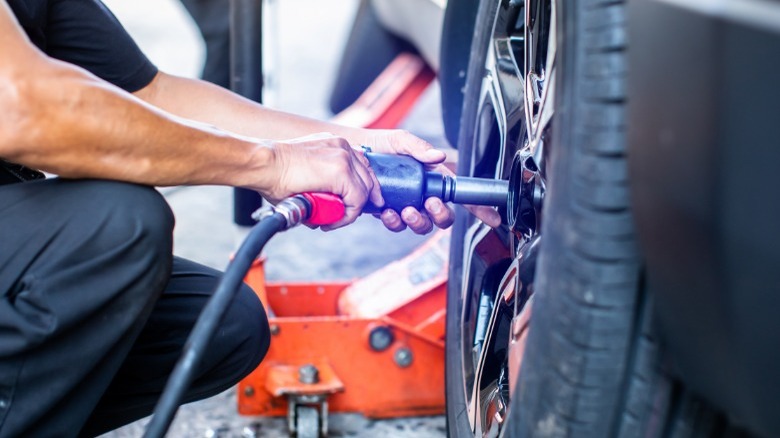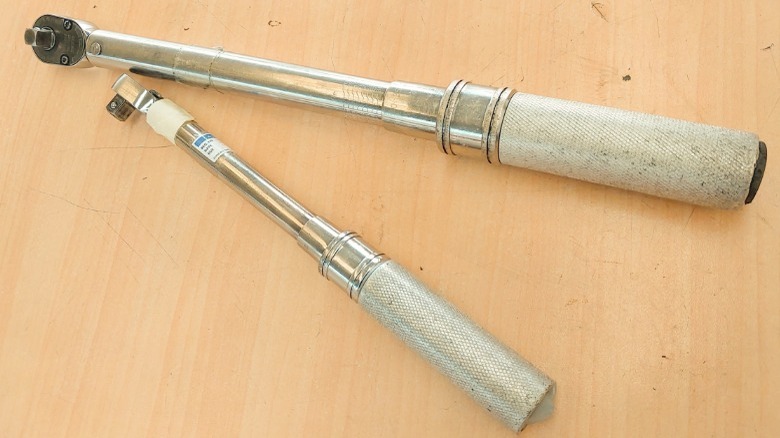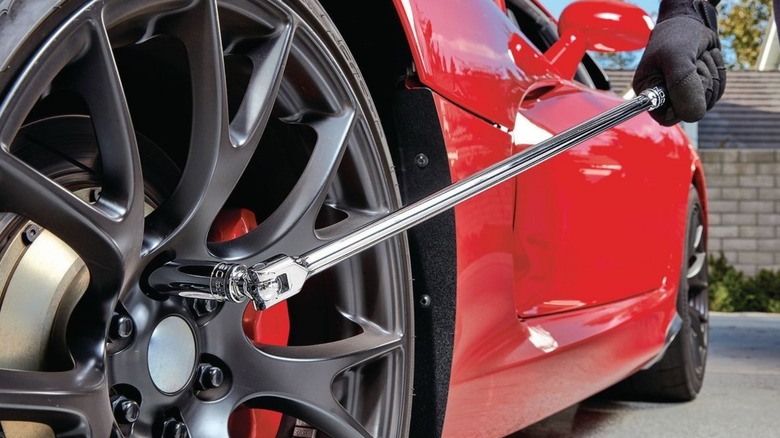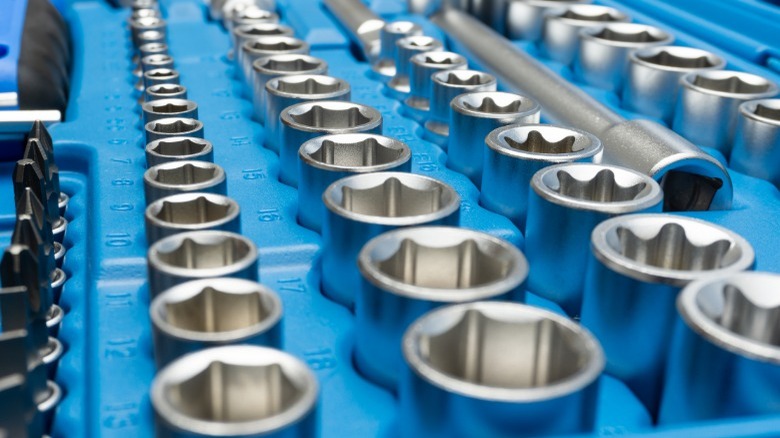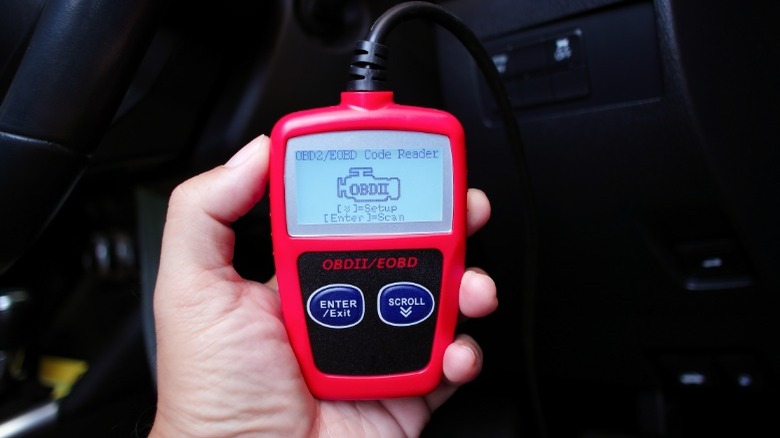Building A Mechanic's Tool Kit? Here's Where To Splurge And Where To Skimp
Anyone who's ever worked on cars knows that doing so requires a huge amount of tools. That includes basic things like screwdrivers, socket sets, and wrenches, as well as more specialized devices like diagnostic-code readers, borescope inspection cameras, and bearing press sets. While building your kit can be insanely enjoyable, it can also be extremely expensive, especially if you want to buy high-quality, pro-tier products. If you're a home mechanic or a beginner auto repair technician, you may feel somewhat discouraged looking at the prices of professional-level tools. There are tips you can use to build a pro tool kit on a budget. However, it's also a good idea to determine the areas in which you should spend a bit more and those in which you can get away with buying the cheaper product.
Luckily, here at SlashGear, we've got you covered. As a former professional mechanic who owns a vast amount of both high-end professional tools and cheaper budget devices, I'll break down some of the most common types of tools you need to get started in the industry, and I'll explain how to know when you should splurge on name-brand items and when to go with the budget version. We'll cover everything from basic hand tools, like wrenches, screwdrivers, and pliers, to niche and specialty devices, like torque wrenches and diagnostic tools. Let's dive in and check it out.
Splurge: hand tools
If you're planning to embark on a career as an automotive repair technician, you'll be using hand tools daily. But using the same tools every day comes with a cost: namely, the deterioration and failure of those tools over time. Some types of tools, like wrenches, screwdrivers, and Torx bits, are particularly prone to wearing out with age. Wrenches can widen and bend over time, screwdriver heads can become rounded, and Torx bits are highly susceptible to fractures with heavy-duty use. All of that is especially true in the case of cheap, budget-oriented tool sets.
There are numerous places that sell affordably priced auto repair tools — for example, Harbor Freight is known to supply mechanics' hand tools for extremely competitive rates. Many of those products are even of relatively high quality. However, even the best budget tool will usually fail long before a higher-end professional product. Companies like Snap-On, Matco, and Cornwell are known for extremely high prices, but while many people claim that all you're really paying for is the brand name, those who have worked in the industry and used tools built by both high-end and budget brands understand the difference.
The fact is, hand tools built by these professional-tier manufacturers almost always outlast those built by cheaper names. Furthermore, professional brands like Snap-On and Matco provide hassle-free lifetime warranties on most of their products. When you're a professional mechanic who spends hours and hours each day turning a ratchet, you want the highest-quality and most reliable tool you can get, and you'll also want to know that if that tool breaks, you can get a quality replacement without a time-consuming visit to the store and without spending extra cash.
Skimp: pneumatics
Professional technicians and even home mechanics use a lot of pneumatic or air-powered tools on auto repair and maintenance jobs. Impact wrenches, air hammers, various types of power grinders, and numerous other pneumatic tools are essential for day-to-day work in an automotive shop. The issue is that air tools are highly expensive, especially if you want to buy one from a brand like Snap-On. Considering that most mechanics are required to supply their own tools, even in professional shops, and the pressure that young techs often feel to acquire the fanciest and most expensive kit as quickly as possible, buying pneumatic tools can be a huge obstacle and a source of a lot of stress.
However, something that many beginner mechanics may not realize, especially if all of their coworkers own large Snap-On or Matco collections, is that you don't have to buy the most expensive pneumatic tools to get the job done. In fact, air tools are one of the areas in which you should skimp when building your first kit.
Various companies produce budget pneumatic tools. Some of them, like Harbor Freight's Earthquake line, are surprisingly powerful and durable. Considering the prices of pro-tier air tools like those built by Snap-On, buying a budget version can mean hundreds of dollars in savings. Use those savings to splurge on things like wrenches and ratchets, and when your budget pneumatics start wearing out a few years into your career, you can start thinking about upgrading to a professional device from a company like Snap-On or Matco.
Splurge: torque wrenches
Another tool mechanics use constantly is a torque wrench. These devices let us tighten fasteners like nuts and bolts to a specified tightness or torque rating without exceeding that rating. Basically, torque wrenches let us install fasteners securely but prevent us from over-tightening them. That's important because essentially every part of your car has a specified torque rating. If you screw a lug nut on too loose, it could fall off, causing extreme damage and accidents. However, if you screw a lug nut on too tightly, you can warp your brake rotors, strip the threads, or break a stud. Virtually every other fastener on your vehicle is the same, so it's critical that mechanics tighten these components to the proper torque rating.
To monitor how tightly we're installing fasteners, we use torque wrenches. There are various types, but most use an internal mechanism that locks the ratcheting head after the chosen amount of force is applied. This prevents the user from spinning the wrench any further and applying excessive torque to the fastener.
Due to their importance, torque wrenches are known to be pricey. However, that doesn't mean you should skimp when it comes to buying one. You don't necessarily have to buy a Snap-On product, and you can search for a more budget-oriented brand if you want. But you should do significant research to determine whether the brand is reputable. The last thing you want, especially in a professional setting, is to have a car come back because you installed a lug nut or brake caliper incorrectly. Not only can these mistakes be costly, but they can also be extremely dangerous for your clients — and your career.
Skimp: breaker bars and pry bars
Breaker bars and pry bars are essential tools for mechanics. Breaker bars look like long, thin rods with a square drive on one end. They're most commonly built with half-inch square drives, and, as the name implies, we use them to break free extremely stubborn fasteners. Even the most powerful impact wrench will sometimes fail to remove a rusty or overly tight lug nut. Breaker bars, with their long handles, let us put more leverage on the fastener to break it free. Pry bars are relatively self-explanatory. These long tools are handy for dislodging stuck parts, testing things like control arm bushings, and positioning or lining up various components.
The thing about breaker bars and pry bars, though, is that they're all basically the same, even if manufactured by different companies. There are slight differences, of course. For example, Snap-On sells a four-piece pry bar set for $263.50, while Harbor Freight sells a similar set for $16.99. Both sets include four pry bars of the same lengths with durable ergonomic grips. The most glaring differences between the two sets include the striking caps on the Snap-On devices and the material used — while Harbor Freight's pry bars are built from carbon steel, the Snap-On tools are built from alloy steel. Comparable differences can be found between Snap-On and Harbor Freight breaker bars, along with similar price gaps.
So this is one of those areas in which you should skimp and go for the cheaper option. Even if you break a cheap version, they're easy to replace, and the money you'll save buying budget versions of these tools can go toward more expensive varieties of more important devices like torque wrenches and ratchets.
Splurge: sockets
Sockets are some of the most common and prevalent tools used by mechanics on a daily basis. Virtually every auto repair and maintenance job requires some type of tool, and the vast majority of automotive projects require using a socket set at some point. However, because you're most likely going to use your sockets every single day you go to work, you're also likely to wear out and break a few sockets every now and then. That becomes increasingly true if you use cheap sockets or use the same chrome sockets with both hand tools and power tools.
Due to the massive amount of use sockets get in a professional setting, you really shouldn't skimp when it comes to buying them. In fact, one or two quality socket sets should be toward the top of the list of things on which you plan to splurge. Again, that doesn't necessarily mean dropping hundreds to thousands of dollars on Snap-On tools on your first day at the shop. However, it does mean you should avoid extremely cheap products from places like Temu or other popular budget vendors. Look for brands that have solid reputations in the industry, ask co-workers about the types of sockets they own, and understand your own needs.
You can save a bit of cash by purchasing only impact sockets at first. Impact sockets are expensive, but you can use them safely with both power tools and hand tools. In contrast, using standard chrome sockets with impact wrenches is a great way to blow out the drive end. Remember, you can always purchase a shiny set of chrome sockets at a later point. Until then, a high-quality set of impact sockets will handle just about any job you can imagine.
Skimp: scan tools
Modern cars rely on a series of computers or control units and a vast amount of electrical sensors. Those components are responsible for monitoring vehicle functions, controlling various systems and accessories, and analyzing data to identify errors and mechanical malfunctions.
One of the systems that works hand-in-hand with your car's computer network to help you stay ahead of any issues is the onboard diagnostic (OBD) system. The diagnostic system works with your vehicle's electronic control unit to monitor virtually every system and part of the car. If it detects an error or malfunction, it will usually trigger the check engine light on your dashboard. Theis is one of many dashboard warning lights designed to help you know when there's something wrong with your car. These lights are incredibly helpful when diagnosing problems. However, in most cases, to understand why these lights appear and what they mean, we have to use a diagnostic tool known as an OBDII code reader.
Scan tools or code readers let us connect to vehicles' onboard diagnostic systems. Depending on the scan tool, we can view things like diagnostic trouble codes, anti-lock braking system codes, supplement restraint system codes, emissions information, and live data. We can also use the tools to clear codes so that the dashboard warning light goes away.
While many code readers are extremely expensive, including those built by Snap-On, others are highly affordable. Since most professional shops will have at least one top-end scan tool that experienced techs can use, you can safely skimp when it comes to buying your personal code reader. Lots of quality scan tools exist with price tags well below $200. At that price, or even lower, you can find a large variety of quality tools with extremely impressive features.
